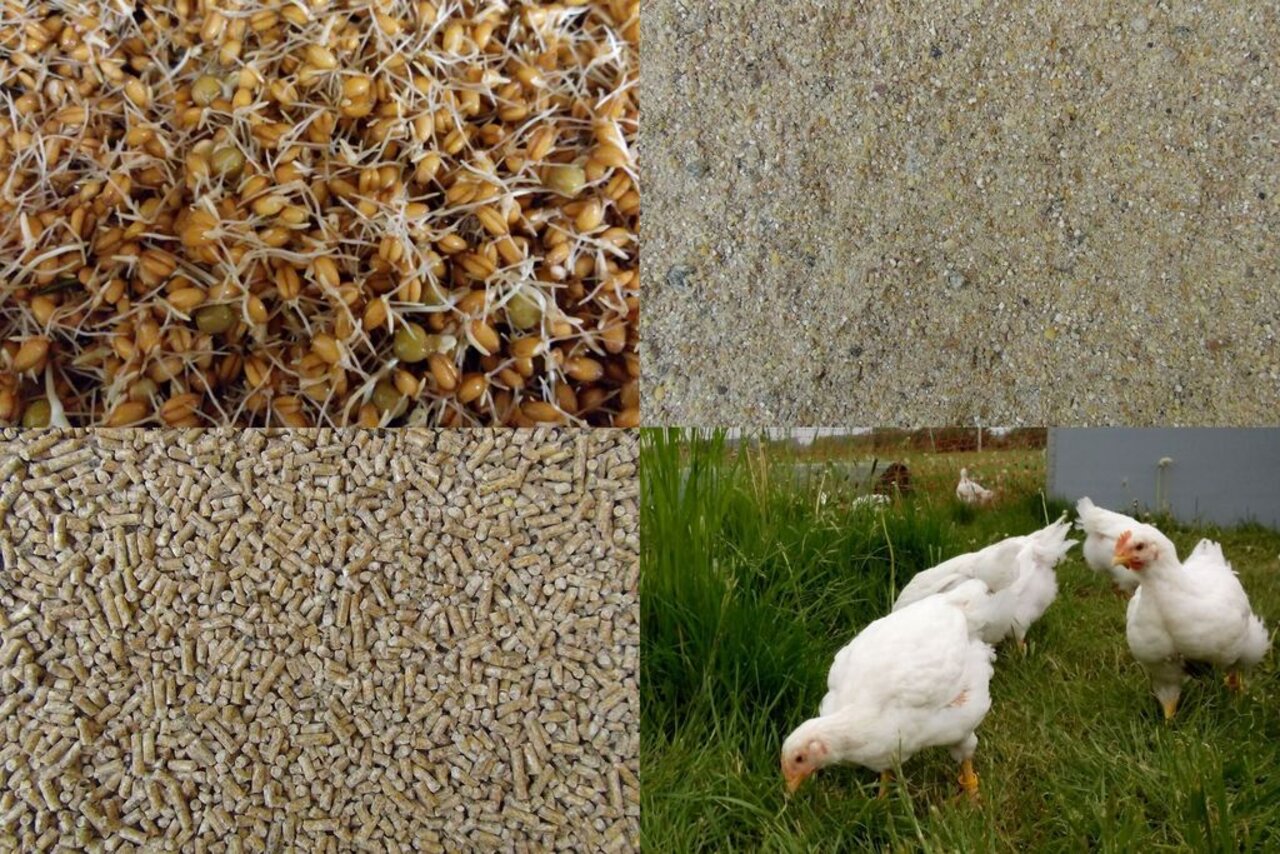Project
Fattening trial feed structure

Effect of the structure (milled or pelleted) of feed offered in addition to germinated wheat on feed intake and performance of broilers
Pelleting chicken feed reduces feed losses and improves feed intake, but causes additional expenses. When germinated wheat is fed to broilers in addition to a pelleted or milled feed mixture, it is unclear if the structure of the feed affects feed intake and animal performance.
Background and Objective
The main advantage of pelleting feed is the fact that each single pellet contains the desired mixture of components and nutrients, whereas milled feed allows the animals to select the most desired components and avoid the less desired ones. Also, it has been shown that feed intake of broilers is higher when feed is pelleted instead of milled. For organically fed broilers, a high feed intake ensures that the animals nutrient demands are met, even when the proportion of imported, high-quality feed is minimise. However, because of the additional costs of pelleting, most farmers use milled feed. If germinated wheat is fed, it is usually mixed with milled feed directly before feeding. The aim of the project is to determine, if the structure of a feed mixture offered in addition to germinated wheat influences feed intake and performance of broilers.
Approach
Four different feeding varieties are tested on a total of 320 broilers, divided into 8 groups and two fattening periods: Milled feed, pelleted feed, milled feed with additional germinated wheat, pelleted feed with additional germinated wheat. After a 4-week rearing phase, the broilers are divided into the experimental groups and thereafter housed in mobile barns with access to pasture. Throughout the experiment, feed intake and weight development of the broilers are documented, and after slaughter, parameters of slaughter performance are collected.
Results
No interaction between feed structure and offering germinated wheat was found, therefore the two effects are interpreted separately. Feed structure influenced neither fattening nor slaughter performance of the broilers. However, considerably less feed was needed for the same performance when feed was pelleted. Therefore, pelleted feed should be preferred for the sake of efficiency, as long as the benefits of efficiency outweigh the cost of pelleting. The offered germinated wheat was eagerly consumed, but replaced an average of 23 % (dry matter basis) of the usual feed mixture. This lead to a “dilution” of the total diet and resulted in impaired fattening and slaughter performance. Therefore, we recommend adjusting the accompanying feed to the offer of germinated wheat to ensure a balanced diet.
Involved Thünen-Partners
Duration
4.2016 - 12.2016
More Information
Project status:
finished
Publications
- 0
Bussemas R, Baldinger L (2018) Effizienter mit Pellets : Struktur fürs Broilerfutter. Bio Land(11):16
- 1
Baldinger L, Bussemas R (2017) Performance of organic free range broiler chicken fed germinated wheat in addition to either mash or pelleted feed. Thünen Rep 54,2:519-522
- 2
Baldinger L (2016) Getreidekeime für Hühner. Bio Land(3):24-25

![[Translate to English:] [Translate to English:]](/media/_processed_/8/e/csm_Bildschirmfoto_2021-03-03_bearb_fc48ac88bf.jpeg)
![[Translate to English:] [Translate to English:]](/media/_processed_/8/e/csm_Bildschirmfoto_2021-03-03_bearb_ba3ec0e9d7.jpeg)






